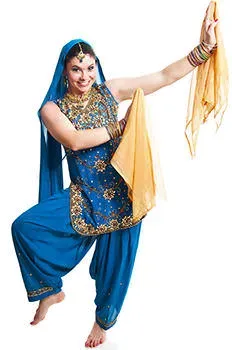 The region that now includes Pakistan in the west, India in the middle and Bangladesh in the east is known as South Asia. It is bordered on the northwest by Afghanistan and the north by Nepal and China. In this region, civilization is thought to have begun over five thousand years ago during the Bronze Age in the Indus Valley. Jewelry has always been a part of South Asian civilization, and indeed has always been a major export of the region. By 2000 BCE, traders were moving back and forth between the ports of India, Sumer, and Egypt. Styles and symbols were shared across these lands. In contemporary India, gems and jewelry make up one of the five largest exports that keep their economy going, and the stars of Bollywood actively promote the ornamentation of their culture to the world.
The region that now includes Pakistan in the west, India in the middle and Bangladesh in the east is known as South Asia. It is bordered on the northwest by Afghanistan and the north by Nepal and China. In this region, civilization is thought to have begun over five thousand years ago during the Bronze Age in the Indus Valley. Jewelry has always been a part of South Asian civilization, and indeed has always been a major export of the region. By 2000 BCE, traders were moving back and forth between the ports of India, Sumer, and Egypt. Styles and symbols were shared across these lands. In contemporary India, gems and jewelry make up one of the five largest exports that keep their economy going, and the stars of Bollywood actively promote the ornamentation of their culture to the world.
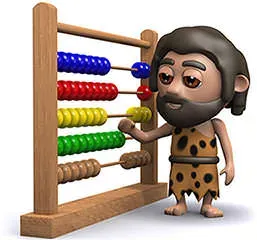 Excavation of sites of prehistoric South Asian communities has unearthed huge amounts of beads in a variety of materials and shapes. These beads were not simple round or oval shapes. Some were decorated with irregular grooves and trefoil patterns, and many were far more complicated than they appear: one type of bead that has been found was made of multitudes of tiny pieces of stone, glued in a mosaic to appear to be one piece of veined stone. Long barrel cylinders and irregular short ones, faceted hexagonal and globular beads, discs and planes, and all sorts of fluted or cruciform beads have been found.
Excavation of sites of prehistoric South Asian communities has unearthed huge amounts of beads in a variety of materials and shapes. These beads were not simple round or oval shapes. Some were decorated with irregular grooves and trefoil patterns, and many were far more complicated than they appear: one type of bead that has been found was made of multitudes of tiny pieces of stone, glued in a mosaic to appear to be one piece of veined stone. Long barrel cylinders and irregular short ones, faceted hexagonal and globular beads, discs and planes, and all sorts of fluted or cruciform beads have been found.
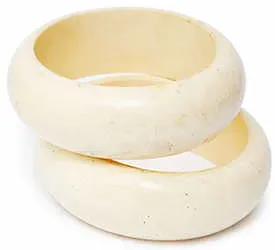 These beads were made of many colored stones alternated with small gold beads. Riband,
These beads were made of many colored stones alternated with small gold beads. Riband, ![]() jasper, carnelian,
jasper, carnelian, ![]() onyx, green felspar,
onyx, green felspar, ![]() turquoise, and different shades of
turquoise, and different shades of ![]() jade, green or yellow
jade, green or yellow ![]() chalcedony,
chalcedony, ![]() agate and
agate and ![]() amethyst: all were used and often in combination with one another. Gold and copper were used frequently during this period but silver was less common at the time. Ivory was also used often, made into bangles before metal was truly common. Beads were still in use as craftsmen discovered the possibility of molding ornaments such as gold headbands with suspended decorations of metal, pearl or shell. Pearls are found in the sea bordering India on the south. For the price-conscious prehistoric South Asian, terra cotta was a popular material.
amethyst: all were used and often in combination with one another. Gold and copper were used frequently during this period but silver was less common at the time. Ivory was also used often, made into bangles before metal was truly common. Beads were still in use as craftsmen discovered the possibility of molding ornaments such as gold headbands with suspended decorations of metal, pearl or shell. Pearls are found in the sea bordering India on the south. For the price-conscious prehistoric South Asian, terra cotta was a popular material.
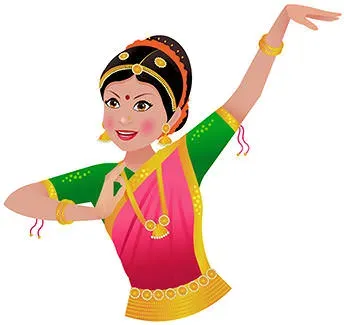 A statue of a dancing girl has been found whose arm was completely covered with bangles. Earrings, nose rings, anklets, combs and hairpins have been found, some of which are still made and worn in the same way today that they were thousands of years ago. From the beginning of civilization in South Asia, ornamentation has been produced for every party of the body, and has been worn in great profusion. Pieces were made to cover every available inch of unclothed body, and were also produced to highlight the person's role in society. Kings, and kings' consorts wore more elaborately shaped pieces than the common folk, who have always had to content themselves with simple pieces rendered in metals of secondary grade.
A statue of a dancing girl has been found whose arm was completely covered with bangles. Earrings, nose rings, anklets, combs and hairpins have been found, some of which are still made and worn in the same way today that they were thousands of years ago. From the beginning of civilization in South Asia, ornamentation has been produced for every party of the body, and has been worn in great profusion. Pieces were made to cover every available inch of unclothed body, and were also produced to highlight the person's role in society. Kings, and kings' consorts wore more elaborately shaped pieces than the common folk, who have always had to content themselves with simple pieces rendered in metals of secondary grade.
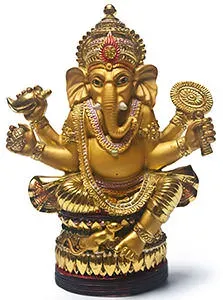 The Vedic period saw the rise of many great kingdoms, or Mahajanapadas. The boundaries of these ancient kingdoms were constantly fluctuating. This is before Buddhism developed, and jewelry was made for men, women, and also for gifts to the gods, ceremonial elephants, and horses. Beads were still in popular use for such ornamentation, but gold was becoming even more popular, as were precious stones. Goldsmiths in the Vedic period had a high social standing due to the fact that they worked with this precious metal. Sometimes working under royal patronage, these craftsmen mastered many technical skills associated with gold that continue to be relevant in today's jewelry market: inlay, the use of fine wires and alloys, plating and gilding were all done in Vedic India.
The Vedic period saw the rise of many great kingdoms, or Mahajanapadas. The boundaries of these ancient kingdoms were constantly fluctuating. This is before Buddhism developed, and jewelry was made for men, women, and also for gifts to the gods, ceremonial elephants, and horses. Beads were still in popular use for such ornamentation, but gold was becoming even more popular, as were precious stones. Goldsmiths in the Vedic period had a high social standing due to the fact that they worked with this precious metal. Sometimes working under royal patronage, these craftsmen mastered many technical skills associated with gold that continue to be relevant in today's jewelry market: inlay, the use of fine wires and alloys, plating and gilding were all done in Vedic India.
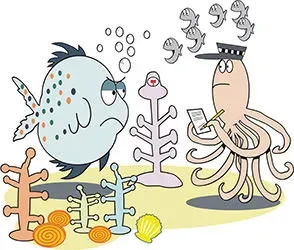 Diamonds were possibly first mined in India. There were significant deposits of the stone in the area, and the stone is described in terms of its characteristics of hardness, luster and dispersion in the Sanskrit text Arthasastra, completed around 296 BCE. This text laid down precise rules for the jewelry trade among other staples of the economy. It describes, for example, a Superintendent of Ocean Mines who regulated the collection of shells and pearls. The punishment for stealing gems was death.
Diamonds were possibly first mined in India. There were significant deposits of the stone in the area, and the stone is described in terms of its characteristics of hardness, luster and dispersion in the Sanskrit text Arthasastra, completed around 296 BCE. This text laid down precise rules for the jewelry trade among other staples of the economy. It describes, for example, a Superintendent of Ocean Mines who regulated the collection of shells and pearls. The punishment for stealing gems was death.
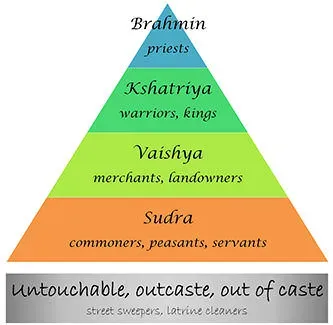 Diamonds were associated with divinity and were used to decorate religious icons. Ownership of the different colors of the stone was restricted to particular castes; only kings were allowed to own all possible colors of diamonds, but Brahmins could wear diamonds with the color of a rock-crystal, Kshatriyas could wear stones with brown color, Vaisyas could wear stones the color of the Kadali flower, and the Sudra were allowed to wear diamonds like polished blades. Wearing the stone appropriate to your caste was actually considered to bring good fortune, though such a boon could only be counted on if the jewel was received as a gift. It was not acceptable to cut diamonds into shapes; the weight of the stone was prized over its facets, and in fact, only flawed diamonds were faceted, usually to hide the flaw. A red spot in a
Diamonds were associated with divinity and were used to decorate religious icons. Ownership of the different colors of the stone was restricted to particular castes; only kings were allowed to own all possible colors of diamonds, but Brahmins could wear diamonds with the color of a rock-crystal, Kshatriyas could wear stones with brown color, Vaisyas could wear stones the color of the Kadali flower, and the Sudra were allowed to wear diamonds like polished blades. Wearing the stone appropriate to your caste was actually considered to bring good fortune, though such a boon could only be counted on if the jewel was received as a gift. It was not acceptable to cut diamonds into shapes; the weight of the stone was prized over its facets, and in fact, only flawed diamonds were faceted, usually to hide the flaw. A red spot in a ![]() diamond was considered inauspicious and if found the stone was roasted until the spot turned black.
diamond was considered inauspicious and if found the stone was roasted until the spot turned black.
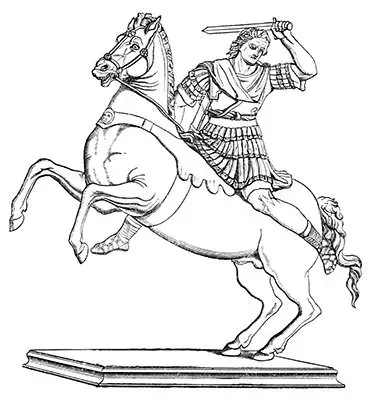 Buddhism arose during a period in the sixth century BCE in which many traditional values were being questioned, including caste hierarchy. This philosophical shift was happening all over the world, and when Alexander the Great descended on India from the northeast in the fourth century BCE, he brought with him Greek and Roman concepts and forms. Decorative pieces from this period discovered at Taxila in the northeast show a blend of Indian and Greek symbols that is not found in pieces from any other period. Figures of Psyche, Cupid and other Greek characters are blended with Indian lotus buds and crescents. Female forms pictured ï¾– though perhaps representing Greek gods ï¾– are like those favored by Indian culture rather than Hellenic. By 100 BCE, such hybrid designs had disappeared.
Buddhism arose during a period in the sixth century BCE in which many traditional values were being questioned, including caste hierarchy. This philosophical shift was happening all over the world, and when Alexander the Great descended on India from the northeast in the fourth century BCE, he brought with him Greek and Roman concepts and forms. Decorative pieces from this period discovered at Taxila in the northeast show a blend of Indian and Greek symbols that is not found in pieces from any other period. Figures of Psyche, Cupid and other Greek characters are blended with Indian lotus buds and crescents. Female forms pictured ï¾– though perhaps representing Greek gods ï¾– are like those favored by Indian culture rather than Hellenic. By 100 BCE, such hybrid designs had disappeared.
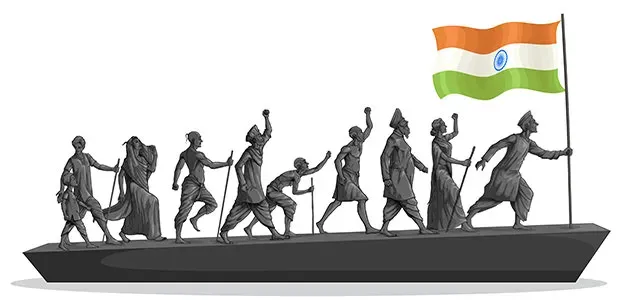 At the turn of the millennium South Asia was ruled by many smaller kingdoms, but was united in the 4th century AD under the Gupta Empire. This period is known as the Golden Age of India, and it is during this time that Hinduism and Buddhism spread emphatically throughout South Asia. Indeed, Buddhist missionaries spread out from India all over Indonesia, Burma, China, Korea and Japan. This opened up another stream of cultural influence, and Indian design ï¾– as well as Indian mathematics, architecture, etc. ï¾– moved into contact with that of these other societies. Trade continued even after the decline of the Gupta Empire but ended abruptly after 1200, when Turkish invaders from Afghanistan established Delhi as a sultanate. The Turks took over much of Indian trade until the fifteenth century, when India again claimed its independence. The Turks brought with them Islam, and the religion stayed. Even today, though India is 80.5% Hindu, it has a large Muslim population as well.
At the turn of the millennium South Asia was ruled by many smaller kingdoms, but was united in the 4th century AD under the Gupta Empire. This period is known as the Golden Age of India, and it is during this time that Hinduism and Buddhism spread emphatically throughout South Asia. Indeed, Buddhist missionaries spread out from India all over Indonesia, Burma, China, Korea and Japan. This opened up another stream of cultural influence, and Indian design ï¾– as well as Indian mathematics, architecture, etc. ï¾– moved into contact with that of these other societies. Trade continued even after the decline of the Gupta Empire but ended abruptly after 1200, when Turkish invaders from Afghanistan established Delhi as a sultanate. The Turks took over much of Indian trade until the fifteenth century, when India again claimed its independence. The Turks brought with them Islam, and the religion stayed. Even today, though India is 80.5% Hindu, it has a large Muslim population as well.
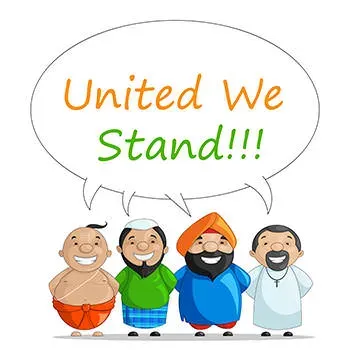 In the early 16th century, descendents of Genghis Khan crossed the Khyber Pass and established the Muslim Mughal Dynasty in India, which lasted for two hundred years and is known for the remarkable art and architecture produced under its reign. Hindu and Muslim cultures mingled, leaving lasting impressions upon one another's cultures; during this period, Hindu, Muslim and Sikh jewelers were equally as likely to find employment as the other; the courts of medieval South Asia were simply interested in quality. The emperors loved precious stones and valued size, number, and magnificence. They wore sashes, turbans, necklaces, armlets and rings, all set with marvelous stones. Some were in possession of so much finery that they wore each piece only once a year. Women's clothing was an index of the wealth of their husbands, and often included such fascinating trinkets as a ring set with a mirror surrounded by pearls that was used by princesses to take little looks at themselves. At the same time, the emperors were great connoisseurs and their ornaments were never bizarre or vulgar, only luxurious.
In the early 16th century, descendents of Genghis Khan crossed the Khyber Pass and established the Muslim Mughal Dynasty in India, which lasted for two hundred years and is known for the remarkable art and architecture produced under its reign. Hindu and Muslim cultures mingled, leaving lasting impressions upon one another's cultures; during this period, Hindu, Muslim and Sikh jewelers were equally as likely to find employment as the other; the courts of medieval South Asia were simply interested in quality. The emperors loved precious stones and valued size, number, and magnificence. They wore sashes, turbans, necklaces, armlets and rings, all set with marvelous stones. Some were in possession of so much finery that they wore each piece only once a year. Women's clothing was an index of the wealth of their husbands, and often included such fascinating trinkets as a ring set with a mirror surrounded by pearls that was used by princesses to take little looks at themselves. At the same time, the emperors were great connoisseurs and their ornaments were never bizarre or vulgar, only luxurious.
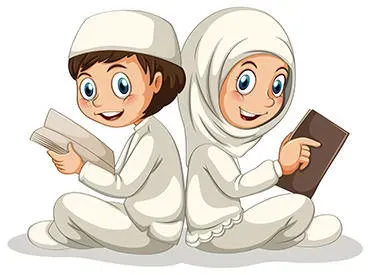 Islam prohibits the depiction of the human figure in representative art. Though paintings that were rendered under Muslim rule teem with images of people, architecture and jewelry crafted at the time adhere strictly to the rule. In place of images of Hindu deities, religious phrases were inscribed on gemstones or were written on papers inserted into ornamented amulets. The Mughal emperors loved arts and kept great memoirs, so we know that one of them, Humayun, when ousted for a time from his throne, wandered from country to country, spending an entire year at the court of Iran. When he finally regained his throne, be brought back with him Iranian masters of craft who taught Indians everything they knew. Indians synthesized these styles and Indo-Persian art and craft reached a wonderful peak.
Islam prohibits the depiction of the human figure in representative art. Though paintings that were rendered under Muslim rule teem with images of people, architecture and jewelry crafted at the time adhere strictly to the rule. In place of images of Hindu deities, religious phrases were inscribed on gemstones or were written on papers inserted into ornamented amulets. The Mughal emperors loved arts and kept great memoirs, so we know that one of them, Humayun, when ousted for a time from his throne, wandered from country to country, spending an entire year at the court of Iran. When he finally regained his throne, be brought back with him Iranian masters of craft who taught Indians everything they knew. Indians synthesized these styles and Indo-Persian art and craft reached a wonderful peak.
 As their empire declined, and Britain came into power, plain gold ornaments came into fashion again. Silver even began to make an appearance in the garb of wealthy women. Stones began to be cut rather than left in their natural form.
As their empire declined, and Britain came into power, plain gold ornaments came into fashion again. Silver even began to make an appearance in the garb of wealthy women. Stones began to be cut rather than left in their natural form.
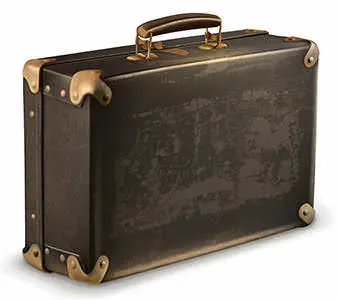 In the 18th century, much of India was controlled by the British East India Company. In 1857, after the Indian Rebellion, the British crown took over control of the region. This translated into British administration of much of India, with the remaining areas controlled through treaties with local rulers. Prior to this period, Indian economic structures and production techniques were far more advanced than those in Europe, but under the British, such advantages were wiped out. By the end of the nineteenth century, India's share of world manufacturing had been suppressed to the point that it barely existed. This meant that less money was circulating between trained craftsmen and Indian buyers of jewels, and that therefore there was less innovation in the field. British occupation also enabled travelers to move safely and easily from one part of the country to another, opening up new means of communication so that ideas and styles could travel freely as well. The result of this, for jewelry, was that there were no longer so many specific regional styles, and the entire area was equalized in terms of its fashions.
In the 18th century, much of India was controlled by the British East India Company. In 1857, after the Indian Rebellion, the British crown took over control of the region. This translated into British administration of much of India, with the remaining areas controlled through treaties with local rulers. Prior to this period, Indian economic structures and production techniques were far more advanced than those in Europe, but under the British, such advantages were wiped out. By the end of the nineteenth century, India's share of world manufacturing had been suppressed to the point that it barely existed. This meant that less money was circulating between trained craftsmen and Indian buyers of jewels, and that therefore there was less innovation in the field. British occupation also enabled travelers to move safely and easily from one part of the country to another, opening up new means of communication so that ideas and styles could travel freely as well. The result of this, for jewelry, was that there were no longer so many specific regional styles, and the entire area was equalized in terms of its fashions.
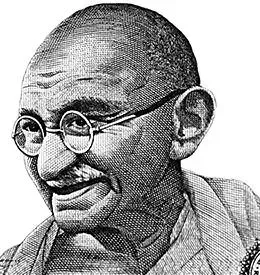 During the first half of the 20th century, the Indian National Congress led by Mohandas Gandhi led a struggle for independence from British rule. Conflicts between Hindus and Muslims led the British to partition the region into three parts before it acknowledged the independence of the subcontinent in 1950. These regions were West Pakistan on the west, India in the middle, and East Pakistan on the east. India, though largely Hindu among the populace, was officially a secular state. West and East Pakistan were Muslim states. West Pakistan continued to make jewelry in the tradition of the Mughals, and Mughal methods ï¾– including the Kundan technique of setting stones ï¾– are still popular today in the country now called simply Pakistan.
During the first half of the 20th century, the Indian National Congress led by Mohandas Gandhi led a struggle for independence from British rule. Conflicts between Hindus and Muslims led the British to partition the region into three parts before it acknowledged the independence of the subcontinent in 1950. These regions were West Pakistan on the west, India in the middle, and East Pakistan on the east. India, though largely Hindu among the populace, was officially a secular state. West and East Pakistan were Muslim states. West Pakistan continued to make jewelry in the tradition of the Mughals, and Mughal methods ï¾– including the Kundan technique of setting stones ï¾– are still popular today in the country now called simply Pakistan.
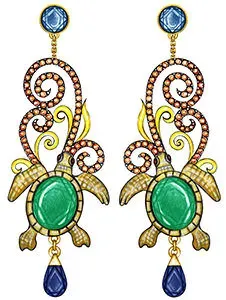 In India, white gold and platinum became available, whereas before women would only have worn yellow gold. People also began to polish gold, whereas before the surface of the metal would have been left dull. During World War II, in India as in the rest of the world, Indian women underplayed their ornaments both by necessity and because it was considered in bad taste. Later in the century, "back to India"" was a slogan that sent women looking for antique pieces to wear. Many of these were converted to conform to modern tastes. Those rings that included mirrors and were worn on the thumb were simply resized to be worn on ring fingers, but other sorts of pieces were reconfigured to suit entirely different parts of the body, as in the case of a headpiece with dangling fish converted to a necklace and a set of fish earrings. Old designs were resurrected as well, however."
In India, white gold and platinum became available, whereas before women would only have worn yellow gold. People also began to polish gold, whereas before the surface of the metal would have been left dull. During World War II, in India as in the rest of the world, Indian women underplayed their ornaments both by necessity and because it was considered in bad taste. Later in the century, "back to India"" was a slogan that sent women looking for antique pieces to wear. Many of these were converted to conform to modern tastes. Those rings that included mirrors and were worn on the thumb were simply resized to be worn on ring fingers, but other sorts of pieces were reconfigured to suit entirely different parts of the body, as in the case of a headpiece with dangling fish converted to a necklace and a set of fish earrings. Old designs were resurrected as well, however."
 After independence was achieved, India was ruled by Jawaharlal Nehru and his descendents until 1989. The government that ensued was led by a Congress that initiated a gradual process of economic liberalization, opening the Indian economy to global trade. This influenced India's domestic politics as well; traditionally, Indian politics have been allied with caste and ethnicity, but then began to become small, regionally based political parties. India is now a Federal Republic and one of their five largest exports is gems and jewelry. Silver is popular in rural areas, where gold is difficult to afford.
After independence was achieved, India was ruled by Jawaharlal Nehru and his descendents until 1989. The government that ensued was led by a Congress that initiated a gradual process of economic liberalization, opening the Indian economy to global trade. This influenced India's domestic politics as well; traditionally, Indian politics have been allied with caste and ethnicity, but then began to become small, regionally based political parties. India is now a Federal Republic and one of their five largest exports is gems and jewelry. Silver is popular in rural areas, where gold is difficult to afford.
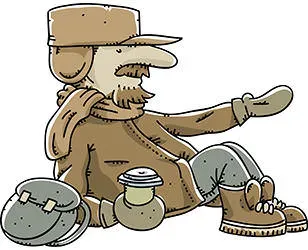 East Pakistan achieved independence from West Pakistan in 1971 and was named Bangladesh. It is primarily a Muslim country, afflicted with annual floods during the monsoon season, which hampers economic development. The country is overpopulated and has a very high rate of poverty. At the same time, it is Bangladesh where lustrous white and pink South Sea Pearls are found, which remain a major part of the country's export business.
East Pakistan achieved independence from West Pakistan in 1971 and was named Bangladesh. It is primarily a Muslim country, afflicted with annual floods during the monsoon season, which hampers economic development. The country is overpopulated and has a very high rate of poverty. At the same time, it is Bangladesh where lustrous white and pink South Sea Pearls are found, which remain a major part of the country's export business.
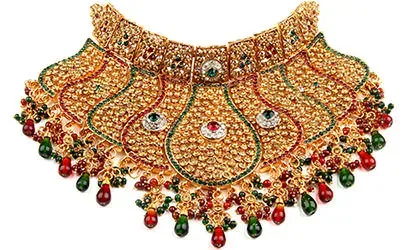 South Asian jewelry today shares an unbroken style tradition with pieces that were made thousands of years ago. Throughout the region, the influence of each stage of invasion and trade ï¾– the Greeks, north Asians, the Mughals ï¾– has been integrated into distinct and extravagant local fashion. South Asian jewelry is some of the most beautiful and intricate in history, and South Asian custom dictates that men and women are some of the most decorated people in the world.
South Asian jewelry today shares an unbroken style tradition with pieces that were made thousands of years ago. Throughout the region, the influence of each stage of invasion and trade ï¾– the Greeks, north Asians, the Mughals ï¾– has been integrated into distinct and extravagant local fashion. South Asian jewelry is some of the most beautiful and intricate in history, and South Asian custom dictates that men and women are some of the most decorated people in the world.